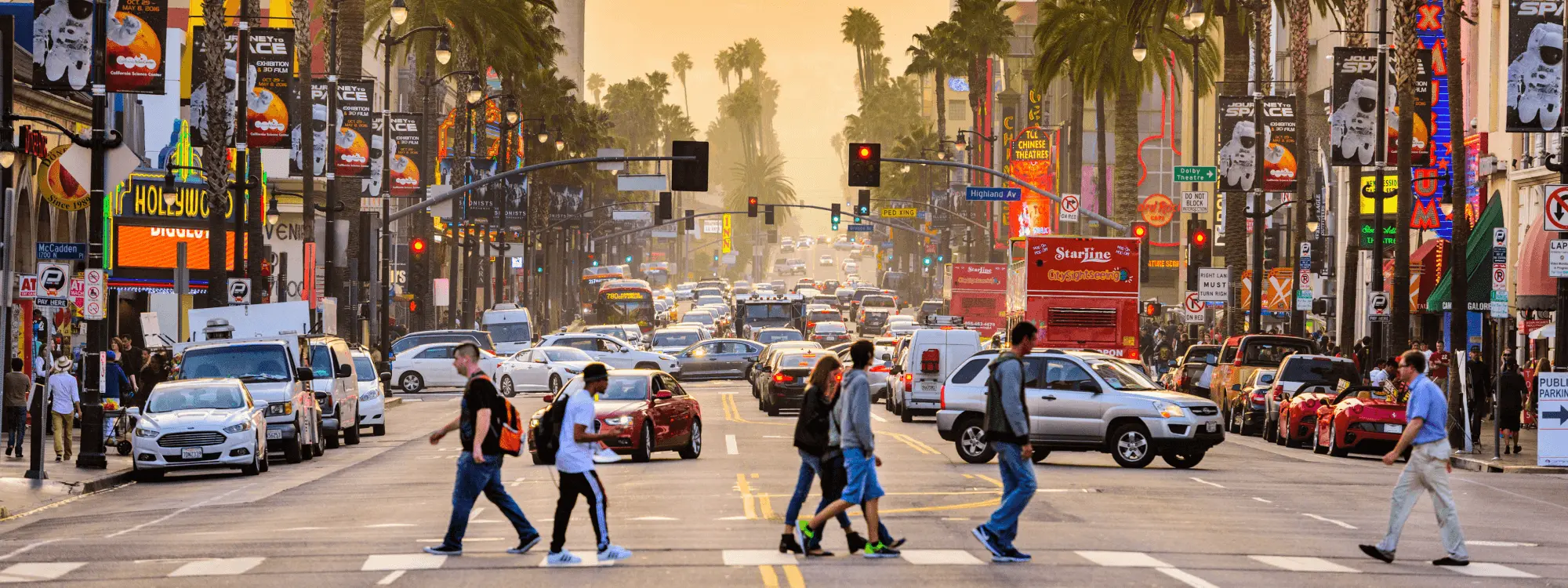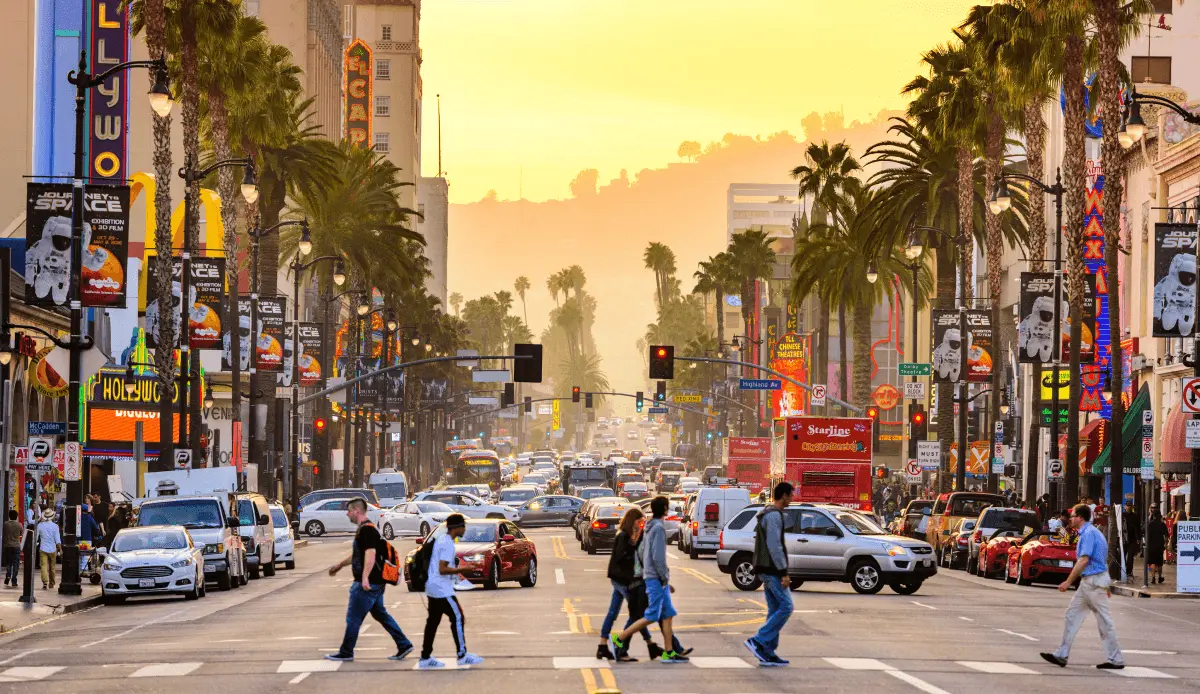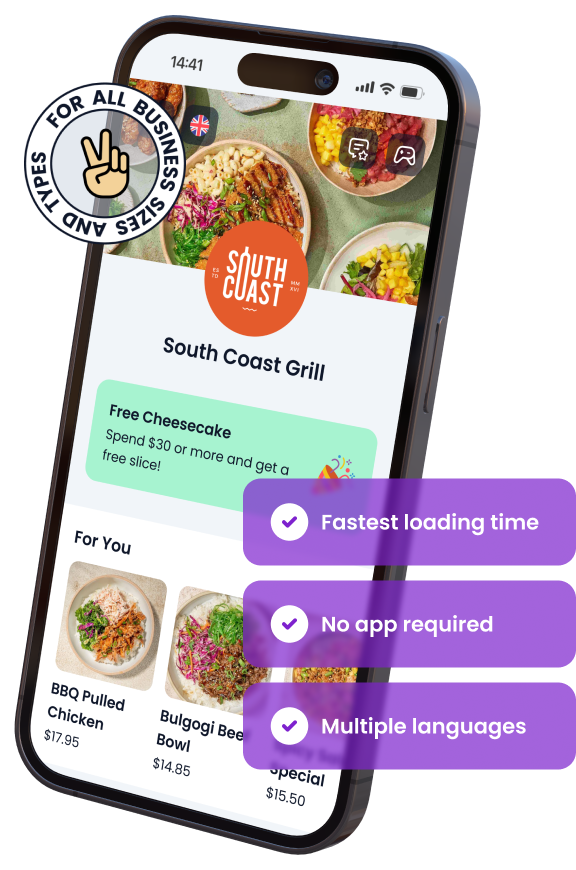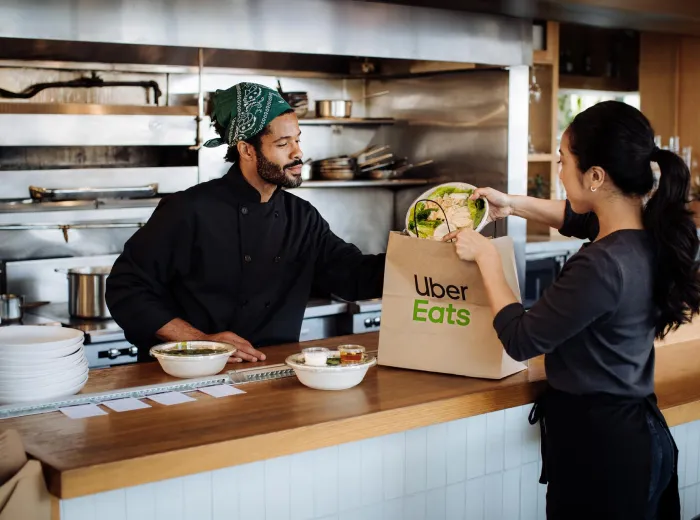

How to Choose a Good Location for Your Restaurant in California?
Choosing the right location for your restaurant can be one of the most critical decisions you’ll make as a business owner. In California, a state known for its dynamic economy, diverse population, and competitive restaurant market, the location you choose can either set you up for success or create long-term challenges. Whether you’re opening a casual dining spot in Los Angeles or a fine dining restaurant in San Francisco, selecting the right place is crucial to attracting the right customers and ensuring steady foot traffic.
There are many factors that go into determining the perfect restaurant location, from understanding local demographics to evaluating neighborhood competition and future growth potential. Restaurants thrive in locations that balance visibility, accessibility, and alignment with the target audience. However, it’s not just about choosing a busy street corner — the right location must also fit your brand, operational needs, and long-term goals.
In this guide, we’ll break down the essential considerations for choosing a great restaurant location in California, including key factors like neighborhood dynamics, lease terms, zoning laws, and more.
Would you like to listen our deep-dive conversation about this article?
Understanding the Importance of Location for Your Restaurant
The location of your restaurant is a fundamental element that can significantly impact your success. It directly influences foot traffic, customer convenience, and even your brand image. California’s diverse cities and regions present a unique challenge, as each location has its own set of benefits and drawbacks. Before making any decisions, it’s essential to understand how location affects every aspect of your restaurant’s operation.
Why Location Matters for Success
The right location can make or break your restaurant. A prime spot increases visibility, helps attract your target audience, and creates opportunities for growth.
- Visibility: High visibility locations, such as near busy streets or shopping centers, bring in more walk-in traffic.
- Convenience: Locations close to public transport, parking, and residential areas are more convenient for customers.
- Brand Perception: The surrounding area affects how customers perceive your brand. A trendy neighborhood, for instance, might elevate a premium dining experience.
How Location Impacts Customer Footfall
Customer footfall is often the result of strategic location choices. Picking a location that aligns with your concept ensures a steady flow of customers.
- High-traffic areas (e.g., tourist spots, malls) naturally draw more visitors.
- Locations near office buildings tend to attract business professionals during lunchtime.
- Residential areas may attract families and evening diners.
| Location Type | Foot Traffic Potential | Target Audience Example |
|---|---|---|
| Tourist Attractions | High | Travelers, Casual Diners |
| Business Districts | Moderate to High | Professionals, Corporate |
| Residential Areas | Low to Moderate | Families, Regular Patrons |
Defining Your Target Audience Based on Location
Each neighborhood attracts different customer profiles. Defining your target audience and aligning it with the right location will ensure better marketing and operational success.
- Demographics: Research local demographics such as age, income, and lifestyle to determine if the area fits your restaurant’s concept.
- Cultural Preferences: Certain neighborhoods may favor specific cuisines, giving you an advantage if your menu aligns with local tastes.
- Customer Habits: Observe when the majority of your potential customers are most active—are they daytime workers, evening diners, or weekend brunch seekers?
By understanding how location affects everything from foot traffic to customer behavior, you’ll be better prepared to choose a site that fits your restaurant’s goals.
Key Factors to Consider When Choosing a Location
Selecting the ideal location for your restaurant in California requires a comprehensive evaluation of various elements that can influence your long-term success. From understanding the demographics of the area to evaluating accessibility and competition, these factors will play a pivotal role in determining the viability of your restaurant’s location. Here, we break down the critical aspects you need to consider.
Demographics and Neighborhood Analysis
Demographics are crucial in determining whether a location is a good fit for your restaurant. A detailed analysis of the local population will help you understand whether your target audience lives or frequents the area.
- Age: Different age groups have varied dining preferences. Millennials may prefer trendy, fast-casual spots, while older generations may opt for fine dining.
- Income Levels: High-income neighborhoods can support premium restaurants, while middle-income areas may respond better to casual, affordable dining.
- Lifestyle Preferences: Areas with active lifestyles may favor health-conscious food options, while urban centers may lean toward quick, convenient dining.
Visibility and Accessibility
Visibility and accessibility directly impact how easy it is for customers to find and visit your restaurant. A well-located venue can attract spontaneous diners and loyal patrons alike.
- Street Visibility: Choose a location where your restaurant can easily be seen from main roads or pedestrian paths.
- Signage: Ensure there is ample space for clear signage that attracts attention from a distance.
- Accessibility: Evaluate whether your location is accessible via public transportation or has adequate parking. Busy, urban areas may benefit from proximity to bus or train lines, while suburban spots may require sufficient parking.
Competition in the Area
Before finalizing a location, consider the existing competition in the area. Analyzing the nearby restaurants will help you understand market saturation and how you can differentiate your offering.
- Assessing Local Competition: Research the number of similar restaurants in the vicinity. For instance, opening an Italian restaurant where there are already several may require a unique value proposition.
- Identifying Market Gaps: Look for gaps in the market that aren’t being served. If there are no vegan or plant-based restaurants in the area, this could be an opportunity to carve out a niche.
- Competitive Advantage: Determine how your restaurant will stand out—whether through menu offerings, pricing, or service quality.
| Competitor Name | Cuisine Type | Strengths | Weaknesses |
|---|---|---|---|
| Local Bistro | Italian | Popular with locals, strong branding | Limited menu, higher prices |
| Fast Bites Café | Fast Casual | Quick service, affordable | Limited seating, high turnover |
| Gourmet Green | Vegan | Unique menu, growing vegan trend | Niche market, limited audience |
Parking and Transportation Options
Convenience is key when attracting customers. Easy access to parking or public transportation can make a significant difference in whether customers choose your restaurant over another.
- Parking Availability: In suburban areas, lack of parking can be a dealbreaker. Ensure there’s enough parking space, either on-site or nearby.
- Public Transportation: For urban locations, proximity to public transportation hubs such as bus stops or subway stations is essential. The easier it is to reach your restaurant, the more foot traffic you’ll attract.
- Traffic Flow: Consider the flow of both foot and vehicle traffic. High-traffic areas often bring more visibility and customers, but might also lead to logistical challenges like traffic jams or delivery bottlenecks.
By considering these key factors—demographics, visibility, competition, and transportation options—you’ll be well-equipped to choose a location that maximizes your restaurant’s success in California.
Evaluating Commercial Spaces for Your Restaurant
Once you’ve identified the ideal area for your restaurant, the next step is to carefully evaluate potential commercial spaces. The right property will align with your operational needs, budget, and future growth plans. This section will help you assess crucial factors such as lease terms, space layout, and zoning laws, which are critical to making an informed decision.
Lease Terms and Costs
Understanding the lease terms is vital for securing a financially sustainable location. Restaurant leases can be complex, so it’s essential to review all conditions carefully before signing.
- Rent Rates: Compare rent costs in the area and determine whether they fit within your budget. Keep in mind that higher visibility may come with a higher price tag.
- Lease Duration: Short-term leases offer flexibility but may result in frequent rent increases, while long-term leases provide stability but require a longer commitment.
- Additional Costs: Beyond base rent, consider other expenses such as property taxes, utilities, maintenance fees, and common area maintenance (CAM) charges. These hidden costs can add up quickly.
Space Layout and Size Requirements
The layout of the space you choose will have a significant impact on both customer experience and your restaurant’s operational efficiency. It’s essential to ensure the space meets your needs for seating, kitchen size, and flow of service.
- Seating Capacity: Ensure the space can accommodate enough seating to meet your revenue targets while adhering to health and safety regulations.
- Kitchen Size: A cramped kitchen can slow down service, while an oversized one can increase costs. Evaluate whether the kitchen layout allows for smooth food prep and service.
- Customer Flow: Consider how customers will move through the space—from entry to seating to restrooms. A well-thought-out flow will enhance the dining experience and improve staff efficiency.
| Space Area | Minimum Size (sq ft) | Ideal Size (sq ft) |
|---|---|---|
| Dining Area | 10-12 sq ft per person | 15-18 sq ft per person |
| Kitchen | 25-30% of total space | 30-40% of total space |
| Storage and Back Office | 10-15% of total space | 10-20% of total space |
Zoning Laws and Permits in California
Zoning regulations determine how land in specific areas can be used, and these laws can significantly impact whether you can open a restaurant in a particular space. Ensuring the commercial space meets all zoning and permit requirements is crucial.
- Zoning Regulations: Confirm that the space is zoned for restaurant use. Some areas may restrict certain types of businesses, including restaurants with specific alcohol licensing requirements.
- Alcohol Licenses: If you plan to serve alcohol, verify the zoning laws for liquor licenses in the area, as California has strict regulations that vary by city and county.
- Building Codes: Make sure the space complies with California’s health and safety standards, including kitchen ventilation, fire safety, and accessibility requirements.
| Permit Type | Application Process Time | Cost Range |
|---|---|---|
| Zoning Permit | 2-4 months | $500-$5,000 |
| Alcohol License | 3-6 months | $3,000-$15,000 |
| Health & Safety Permits | 1-3 months | $500-$2,000 |
By thoroughly evaluating the lease terms, space layout, and zoning laws, you’ll ensure that your chosen commercial space aligns with both your current operational needs and future growth plans. This due diligence can save time, money, and potential legal hurdles down the road.
How to Choose Between Urban, Suburban, and Rural Locations
When choosing the location for your restaurant, you’ll need to decide whether an urban, suburban, or rural setting is best suited for your concept. Each type of area comes with its own unique set of advantages and challenges, from foot traffic to operational costs. Understanding the key differences will help you make an informed decision that aligns with your business goals and customer base.
Pros and Cons of Urban Restaurant Locations
Urban areas offer a high volume of potential customers but come with increased competition and higher costs. Restaurants in busy cities benefit from foot traffic but must balance this with the challenges of a crowded market and higher operational expenses.
Pros:
- High foot traffic due to dense populations and tourism.
- Exposure to a diverse and dynamic customer base.
- Proximity to public transportation, making it easier for customers to visit.
Cons:
- Higher rent and operational costs compared to suburban or rural areas.
- Intense competition with many restaurants often in close proximity.
- Parking can be limited, affecting customer convenience.
| Factor | Advantage (Urban) | Disadvantage (Urban) |
|---|---|---|
| Foot Traffic | High visibility and spontaneous customers | Crowded, competitive market |
| Rent | Prime location with exposure | Higher lease costs |
| Parking & Accessibility | Public transport options | Limited parking availability |
Why Suburban Locations Could Be Ideal
Suburban locations offer a balanced environment with moderate rent costs and a growing population. While foot traffic might be lower than in urban centers, suburban areas often foster loyal, repeat customers from local neighborhoods.
Pros:
- Lower rent costs than urban areas, allowing for more financial flexibility.
- Access to a stable, local customer base, often families or working professionals.
- More parking spaces, making it convenient for customers to visit.
Cons:
- Less spontaneous foot traffic, requiring a stronger focus on local marketing.
- Potential for a slower lunch crowd, especially in residential areas where most people are at work during the day.
| Factor | Advantage (Suburban) | Disadvantage (Suburban) |
|---|---|---|
| Rent | Lower lease costs | Less visibility compared to urban locations |
| Customer Loyalty | Stable, repeat customers | Fewer walk-ins |
| Parking | Ample parking space | Less access to public transportation |
Is a Rural Location Right for Your Restaurant?
Rural locations are ideal for niche concepts or destination dining experiences. While population density is lower, rural areas often offer unique opportunities for restaurants that cater to specific needs or provide an exclusive experience.
Pros:
- Lower rent and property costs, reducing overall operational expenses.
- Less competition, allowing you to capture a larger share of the local market.
- Opportunity to create a destination dining experience, attracting customers from nearby cities or towns.
Cons:
- Lower population density, meaning fewer potential customers in close proximity.
- Limited foot traffic and reliance on local patrons or travelers.
- Marketing efforts must be strong to attract people from surrounding areas.
| Factor | Advantage (Rural) | Disadvantage (Rural) |
|---|---|---|
| Rent | Significantly lower costs | Smaller customer base |
| Competition | Less market saturation | Fewer customers in the area |
| Marketing | Niche opportunities | Heavily reliant on local and destination marketing |
By weighing the pros and cons of urban, suburban, and rural locations, you can determine which environment best suits your restaurant’s concept and target audience. Each setting offers unique opportunities and challenges, so consider your long-term goals when making this critical decision.
Assessing Future Growth Potential of the Location
When choosing a location for your restaurant, it’s crucial not only to focus on the present but also to consider the future growth potential of the area. An initially perfect location may lose its charm if the neighborhood declines, or it could become even more desirable if the area is set to grow. Assessing the future development and population trends of your chosen location will help ensure long-term success for your restaurant.
How to Research Local Development Plans
Understanding the city’s or county’s long-term development plans will give you a glimpse into the potential future of the area. Development projects can significantly impact your restaurant by either increasing or decreasing traffic and desirability.
- City Planning Meetings: Attend or review local planning board meetings to find out about upcoming residential or commercial projects. New shopping malls, apartment complexes, or offices can increase foot traffic in your area.
- Infrastructure Improvements: Look for planned infrastructure developments like new highways, public transport expansions, or road improvements. These can make your location more accessible and attractive to customers.
- Neighborhood Revitalization Projects: Many cities in California have revitalization efforts to improve rundown areas, transforming them into trendy spots. These developments often bring a new influx of potential customers.
| Development Type | Potential Impact on Restaurant |
|---|---|
| New residential complex | Increased local customer base |
| Commercial project | Higher daytime foot traffic |
| Infrastructure improvements | Easier accessibility, more visitors |
Anticipating Changes in Neighborhood Demographics
Neighborhood demographics can shift over time due to gentrification, economic factors, or population trends. These shifts can bring new opportunities for your restaurant but may also challenge your business model if you’re not prepared.
- Gentrification: As some neighborhoods experience gentrification, the local demographics shift toward younger, higher-income residents. This can create demand for upscale dining options or trendy concepts.
- Economic Decline: Conversely, if a neighborhood is in decline, with businesses closing and property values dropping, you might face reduced foot traffic and lower customer spending.
- Cultural Shifts: If the area starts to attract new ethnic groups or communities, it may change local preferences, creating demand for specific cuisines or dining experiences. Monitoring census data and local reports will help you stay on top of these changes.
| Demographic Shift | Impact on Restaurant Concept |
|---|---|
| Gentrification | Opportunity for upscale dining |
| Economic decline | Need for budget-friendly options |
| Cultural shifts | New demand for ethnic cuisines |
By thoroughly assessing the future growth potential of your restaurant’s location, you’ll ensure that your business is set up for long-term success. Keep a close eye on development plans and demographic shifts to adapt your strategy and capitalize on new opportunities.
Special Considerations for California
California’s unique characteristics—ranging from its competitive real estate market to its stringent environmental regulations—require restaurant owners to take a tailored approach when choosing a location. The state’s diversity and evolving business climate mean that finding the right spot goes beyond the basics; you need to factor in specific challenges and opportunities that are prevalent in the Golden State.
Navigating California’s Unique Real Estate Market
California’s real estate market is known for its high costs and competitive demand, particularly in major metropolitan areas. Understanding how to navigate this landscape can help you find a location that fits your budget while offering long-term growth potential.
- High Rent Costs: Cities like San Francisco, Los Angeles, and San Diego are some of the most expensive real estate markets in the U.S., with rent prices significantly higher than the national average.
- Regional Variations: While urban centers command premium rents, rural or less densely populated areas such as the Central Valley or inland regions may offer more affordable options.
- Up-and-Coming Neighborhoods: Areas undergoing revitalization or gentrification may present opportunities for more affordable leases with potential for growth, as these regions typically experience an influx of new residents and businesses.
| Location Type | Avg. Rent per sq ft (2024) | Growth Potential |
|---|---|---|
| Urban (e.g., San Francisco) | $45-$80 | High but costly |
| Suburban (e.g., Orange County) | $25-$40 | Moderate |
| Rural (e.g., Central Valley) | $10-$20 | Lower but steady |
Environmental and Sustainability Concerns
California is a leader in environmental sustainability, and choosing a location that aligns with eco-friendly practices can positively impact both your reputation and operational costs. Environmental consciousness is not just a trend but a regulatory expectation in many areas.
- Energy Efficiency: Many California cities require businesses to comply with strict energy efficiency standards. Opting for energy-efficient locations can reduce long-term costs and ensure compliance with state regulations.
- Waste Management: California has strict waste disposal and recycling laws. Consider locations with infrastructure that supports sustainable waste management practices, such as composting and recycling services.
- Water Usage: Due to recurring droughts, water conservation is a key concern in California. Look for spaces that have efficient plumbing systems or the ability to implement water-saving measures.
The Importance of Energy Efficiency in California’s Climate
Given California’s diverse climate, from the cooler coastal regions to the hot inland areas, energy efficiency is crucial for managing operating costs and complying with state regulations.
- Air Conditioning and Heating: California experiences a wide range of temperatures, making climate control an important factor in selecting a location. Ensure your space has modern, efficient HVAC systems to maintain a comfortable environment for diners while keeping energy costs manageable.
- Solar Power Potential: Many businesses in California are adopting solar energy to reduce electricity costs. If your location has the potential for solar installations, this could significantly lower utility expenses in the long run.
- LEED-Certified Buildings: Some properties are Leadership in Energy and Environmental Design (LEED) certified, meaning they are designed with sustainability in mind. LEED-certified buildings may offer tax incentives or reduced operating costs due to energy-saving features.
By keeping California’s unique real estate market and environmental standards in mind, you’ll be better equipped to choose a location that not only meets your operational needs but also aligns with the state’s progressive sustainability initiatives. These factors can not only save you money but also enhance your restaurant’s reputation in an eco-conscious market.
What to Do Once You’ve Chosen Your Location
Selecting a location for your restaurant is only the first step. Once you’ve made your decision, there are several crucial tasks to address before you open your doors. From conducting a thorough site visit to creating a solid financial plan, it’s important to ensure that your chosen location meets both practical and financial requirements. These steps will help you set a strong foundation for your restaurant’s success.
Conducting a Thorough Site Visit
A site visit allows you to evaluate the physical condition of the space and identify any potential issues before signing the lease or beginning renovations. This step is essential for ensuring the location is truly viable for your restaurant.
- Check for Red Flags: Look for signs of wear and tear, such as water damage, electrical issues, or structural problems. These could lead to costly repairs in the future.
- Assess Space Functionality: Make sure the layout fits your needs, including the kitchen, dining area, storage, and restrooms. Evaluate whether there is enough space for seating while maintaining a comfortable atmosphere.
- Neighborhood Vibe: Take the time to walk around the neighborhood. Are there other businesses that could complement your restaurant, like retail stores or entertainment venues? Consider how the overall vibe of the area aligns with your brand.
Hiring a Professional Inspector for Final Approval
Even if everything looks good during your initial visit, it’s wise to hire a professional inspector to ensure the building meets all safety and regulatory standards.
- Electrical and Plumbing Inspections: Have an expert check the wiring and plumbing systems to ensure they are up to code and can handle the demands of a commercial kitchen.
- Structural Integrity: A professional will evaluate the foundation, roofing, and overall structure of the building, helping you avoid costly repairs down the line.
- Fire Safety and Accessibility Compliance: Ensure the location complies with local fire safety standards, and that it is accessible to individuals with disabilities, as required by the Americans with Disabilities Act (ADA).
| Inspection Type | Importance | Cost Estimate |
|---|---|---|
| Electrical and Plumbing | Ensure systems can handle equipment | $300-$1,200 |
| Structural Integrity | Avoid expensive repairs | $500-$2,000 |
| Fire and Accessibility | Compliance with safety regulations | $200-$500 |
Creating a Financial Plan for Your New Location
Once the site has passed inspection, it’s time to create a detailed financial plan. This will help you manage startup costs and ongoing operational expenses.
- Budget for Renovations: Most commercial spaces require some level of renovation to fit your restaurant’s concept. Factor in costs for kitchen equipment, décor, signage, and any necessary structural changes.
- Operating Costs: Include monthly rent, utilities, insurance, and payroll in your financial plan. Research the typical utility costs for restaurants in your area to estimate expenses accurately.
- Plan for Seasonal Variations: Many restaurants experience fluctuations in business due to seasonal trends. Set aside a portion of your budget to cover slow periods, such as the post-holiday lull or off-season for tourists.
| Expense Category | Cost Range | Notes |
|---|---|---|
| Renovations and Equipment | $50,000 – $250,000 | Varies based on space size and concept |
| Monthly Rent | $5,000 – $20,000 | Depends on location and size |
| Utilities (electric, water, gas) | $1,500 – $5,000 | Monthly estimate |
By following these essential steps after choosing your location—conducting a thorough site visit, hiring professional inspectors, and creating a comprehensive financial plan—you’ll ensure that your restaurant is set up for success from day one. Taking the time to address these tasks will not only minimize unexpected costs but also give you a clear vision of your path forward.
Choosing the right location for your restaurant in California is a pivotal decision that will impact your business’s success in the long term. From analyzing demographics and competition to evaluating future growth potential, each factor plays a vital role in ensuring your restaurant thrives. By carefully assessing commercial spaces, understanding the nuances of California’s real estate market, and addressing special considerations like environmental regulations, you can position your restaurant for growth. Taking the necessary steps after choosing your location—such as site inspections and financial planning—will further solidify your foundation for success. Ultimately, with thorough research and strategic planning, you’ll be well-equipped to open a restaurant in a location that not only attracts customers but also aligns with your long-term vision.
ABOUT THE AUTHOR
Erkin Coban
Your Customers Deserve The Best
And we got Menuviel for them.
The fastest and easy-to-use online QR menu with 12+ unique features. Choose Menuviel and elevate your service quality to the next level.
Use free for the first 30 days.

In This Article

Free AI Tools for Restaurants
TRY NOW ➜

Add your food delivery app links
Make it easy for customers to find your restaurant by adding direct links to popular food delivery apps.







